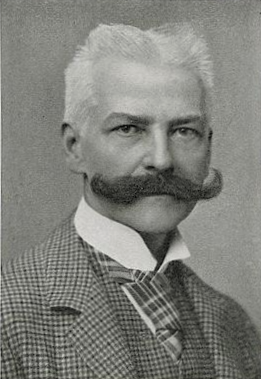History
Long nineteenth century

Velhagen & Klasing's first major success was the popular cookbook of Henriette Davidis from 1844 to 1875. [1] [2] The company earned 2,762 Thaler in the cookbook's peak sales year in 1858, [2] or the equivalent of over US$ 40,000 in 2021. [3] Davidis argued fiercely with the company over her compensation, and her royalty payment increased from 50 to 1000 Thaler over its publication history. [1]
In the 1870s and 1880s, Velhagen & Klasing sold two-thirds of its Lutheran and patriotic works through Colporteur salesmen, at the time a new method of marketing through door-to-door salesmen. [4] [a]
Another area that Velhagen & Klasing emphasized was geography textbooks. In this area, Ferdinand Hirt , who published Ernst von Seydlitz 's works, was their major competitor. [5] In the mid-to-late 1800s, Hirt & Sohn [b] and Velhagen & Klasing together had an oligopoly in the German textbook market. [6] [7]
Velhagen & Klasing was also dominant in popular children's literature. [8] Their popular novels for girls in this era conveyed largely the same values as their schoolbooks, namely virtue, piety, self-sacrifice, and docility. [8]
In the late nineteenth century, Velhagen & Klasing published a number of very popular adventure novels by S. Wörishöffer. [9] [10] She was hired by Velhagen & Klasing to rewrite an unsuccessful novel by a previously unpublished writer, Max Bischoff, which resulted in Robert des Schiffsjungen (1877). [9] [11] The publisher intentionally hid the identity of Wörishöffer, who was not the world traveling male that the novels implied, in order to preserve their credibility. [10]
In 1886, they began publishing the illustrated family monthly, Velhagen & Klasing's Monatshefte, which included reviews by Carl Hermann Busse. [12] [ clarification needed ]
In 1901, they bought the publishing company of Georg Wilhelm Ferdinand Müller (1806–1875) from his heirs. Müller's work consisted primarily of textbooks. [13]
The publisher had significant involvement in the Leipzig Geographical Society, known as Geographischer Abend. [14]
After World War I
When World War I caused a redrawing of national boundaries, some publishers, such as Columbus Verlag of Berlin , began developing geographical maps which ignored territorial boundaries. Velhagen & Klasing rejected this shift and focused on territorial boundaries. [15] Velhagen & Klasing published the second most popular school atlas in Germany in the 1920s, after the one made by Carl Diercke. [16] Their atlases in this era were examples of cartographic propaganda intentionally designed to promote German nationalism, [17] as had their other textbooks since the nineteenth century. [18] The trend to expand the borders of Germany and German cultural influence in Velhagen & Klasing's maps began in the late 1920s, and by 1933 their maps contained large-scale falsifications. [19]
Velhagen & Klasing was one of many who profited from the closure of Jewish and left-wing publishing companies during the Nazi Party's rise to power in the 1930s. [20]










